
Pack your bags, equality has been solved: MTV’s reality show about a bunch of gay men in West Hollywood— with its camera-eager and progressive-politics-approved cast—just wrapped up its first (and last?) season.
In The Real Friends of WeHo, clunky and derivative title notwithstanding, efforts to sweat the representation conversation took a back seat.
Rather, the show—produced by an army of people from Truly Original and MTV—was cannily self-conscious about situating itself in a landscape of gay pop culture where, as the accusation goes, gay people are more inclined to support the efforts of straight creatives that either play queer or tap (knowingly or otherwise) into some queer sensibility.
As celebrity stylist Brad Goreski intoned in the pilot’s opening lines, “You put six gay guys together with cameras around them, there’s going to be laughter, there’s going to be tears, there’s going to be some shade— so much is going to happen!” A camera then pans around a party where we see a cameraman and a boom mic hovering over a small circle of people, as if to underscore that this is a manufactured scene in a television series.
How about we take this to the next level?
Our newsletter is like a refreshing cocktail (or mocktail) of LGBTQ+ entertainment and pop culture, served up with a side of eye-candy.
If the Real Housewives shows urge their viewers to suspend the disbelief that any of its cast members are friends, that any of the situations are something besides contrived, or that any of it is “real,” the Real Friends seem to announce up top that some of the fakery of it all is why we watch.
And The Real Friends Of WeHo wasn’t terrible at doing this. Early on, each of the six cast members—which include Goreski, actor Curtis Hamilton, entrepreneur Dorión Renaud, influencer Joey Zauzig, red carpet host Jaymes Vaughan, and YouTuber and performer Todrick Hall—respond to the producers asking about their desire and reaction to participating in the show.
Most of their answers seemed to be code for something else. The repetition of “I want to be more social after the pandemic” was transparent, nearly as explicit in outlining that nearly everyone’s dynamics will be work relationships rather than “sincere” friendships.
Related:
Before ‘The Real Friends Of WeHo,’ there was the loveable trainwreck ‘The A-List: New York’
The show got mixed reviews, but it also highlighted some actual gay community issues of the time… kinda sorta.
What was relatively unusual for this kind of reality show was that the cast members were already in the public eye and have crafted a public persona that casts a shadow over their Real Friends persona. In the landscape of the extremely online, adding the dimension of a public enough profile that both audiences and cast must contend with for the type of show this is offers a potentially interesting meta tension.
This is particularly true of Goreski, who has been on and off reality TV since 2008 with The Rachel Zoe Show; Curtis Hamilton, who is using the show as his coming out debut (he was not publicly out prior to the show’s announcement); Joey Zauzig, who’s front facing identity is available in bits and pieces (as influencers are wont to do); and Todrick Hall.
Hall is like a hurricane for the show, not because he’s overly dramatic, but because his storyline seems to take up an unusual amount of space for an ensemble series. Maybe this was in the forecast when the producers cast him. While the creator and singer has made the rounds with a few dimwitted Internet scandals, Hall appears to be using the show, somewhat ironically, as a form of damage control: this is the real Todrick Hall, and this is how he’s going to clear his name.
When asked about how he felt about the reaction to the cast announcement for the show, he called it a “witch hunt.” When he’s on screen, he plays martyr, as if being on a reality show will somehow alleviate pressure or prove to audiences that he’s actually good.
Related:
Todrick Hall drags the gay community for hating on ‘The Real Friends of WeHo’ and oh, brother
As Saucy Santana once said, “One thing about the comments: they are not on your side.”
Hall’s plot involved this negotiation of self and public perception, sliding the show into an interesting problem, which it never quite solved. If this cast must contend with the characters that they are playing on the show—an extension or fleshed-out version of who some extremely online people might already be aware of—they also have to fulfill the necessary archetypes of this genre of programming.
On a lifestyle reality series about an ensemble of friends or coworkers, everyone must represent an archetype: the snake, the ally, the innocent one. These are personalities, which are idiosyncratic spins on existing melodramatic types, have become deeply embedded in our cultural lexicon.
There is another double bind this show might find itself in, as a derivative of another franchise that has depicted extremely complicated gender politics. It has become an object of gay pop culture starring gay people, and some audience members were upset from the jump.
But the thing is, Real Friends isn’t actually gunning so hard to be the perfect example of representation. Instead, its drama is rooted in figuring its own stuff out: what kind of show it wants to be and for whom—as opposed to the prepackaged and everyone-approved version of this kind of show. (Ironically, accusations of the show’s badness, often coming from people who have simply not engaged with it, claim it is this cleaned up, safe and straight rubber-stamped showcase.)
Yet, for an interesting and fun show, one that can entertain beyond the conceptual grab bag, the characters do have to fall into recognizable types while also negotiating the baggage those types may represent: “gay b*tch” is not necessarily a neutral trope. Who will be whom amongst these Real Friends? Does anyone care?
Perhaps the show’s biggest flaw was that, beyond its meta fascination, it never really felt fun and fancy free. It’s hard to make a truly outrageous and raucous first season as it tries to find its footing, but there’s a level of anxiousness to the show and its personalities, who are trying a little too hard to make an impression, that seem to hold it back.
While it attempted to shrug off self-imposed responsibility and apprehension about audience response, Real Friends spent a little too much time unable to decide whether the thrill is in its artifice or in its authenticity.
But even in its debut season, Real Friends Of WeHo made a lightly daring claim: maybe that the show isn’t sure of itself, but is certainly aware of the eyes on it, is where its depth lies. The case to be made about this show, though, is exactly in its uncertainty about itself.
In a strange and surprising way, as these characters run about trying to facilitate these friendships for work and craft their storylines like they’ve hit the ground vogueing, the pervasive anxiety about expectations and performance within the confines of both reality TV and gay culture gives the show a meta appeal. It is constantly referring to itself, the show’s fourth wall hanging by a thread.
Doreen St. Felix wrote of Salt Lake City that “being tasteless requires good taste.” Here, the fascination is in watching this show develop any palate at all.
Related:
Joey Zauzig just spilled a whole pot of tea on his ‘Real Friends Of WeHo’ co-stars, now someone get a mop
The influencer doesn’t hold back when sharing his real feelings about his ‘Real Friends.’

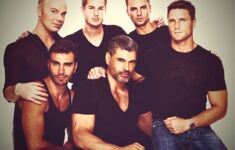


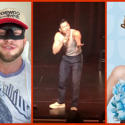
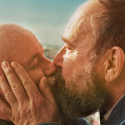

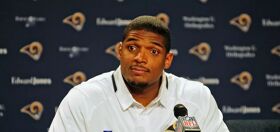

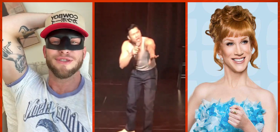

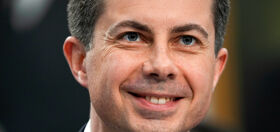
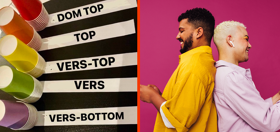


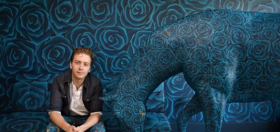


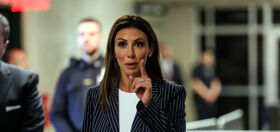

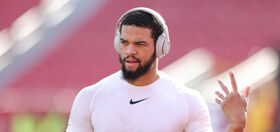
Kangol2
I’ll say this: the show wasn’t as bad as predicted. It didn’t break any new ground and should have had more bite, because by the last episode I asked, is that it? There was drama but it could have been more original and interesting.
But for a glimpse into the lives of a selected number of out gay White and Black men living in and around the gayborhood of West Hollywood (i.e. part of gay LA), it wasn’t terrible. The most interesting storyline was Curtis Hamilton’s ongoing process of coming out, and Brad Goreski was the emotional ballast for the group.
It seems Dorión Renaud felt miscast or alienated from everyone else, and if there’s a second season, just replace him with someone who wants to be there. The same is true with the Jaymes character. I’ll close by saying that Todrick Hall probably helped his reputation with this show, as he came off as a decent person, and again, if there’s a second season, more clips of him performing would probably be the way to go. Also, diversify the cast even more and don’t preclude people who have OF sites, etc. It’s 2023, not the Dark Ages.
lou lou de la falaise
I hope the show comes back with Chris Salvatore (love you Chris!), and he and Curtis fall in love and Brad is the wedding planner and Todrick is the wedding singer. I checked out Dorion’s Instagram and he was just as as rude there as he was on the show. Get over yourself (and your ‘brand’).
lou lou de la falaise
Jaymes and Dorion thought they could show up promote Outbound and Buttah.
dbmcvey
@lou lou de la falaise
I agree with you about Chris Salvatore! I think his treatment on this show was beyond hypocritical.
abfab
Do you know how happy I am that we don’t get this channel.
stonercharles
AMEN!!!
dbmcvey
In truth, Weho isn’t the gay mecca it was when I moved here almost 40 years ago. It’s too expensive for young gay people to live here.
I would have been more interested in this show if they had gay people who actually live there. They probably would have been older, more interesting, living in Weho only because they have rent controlled apartments or they bought at least a quarter of a century ago.
Colorful Kent
Yes, cast real unknowns and give them a voice. And the make up of WeHo is not 50% white and 50% Black. Lots of Latinx and API.
PoetDaddy
Didn’t love it, didn’t hate it. I wouldn’t mind being friends with Brad and Todrick, but I’ve felt that way about both of them for years. The only thing that made me want to hurl (and hurl things at the TV) was Dorion Renaud. I hope I never have to see him or hear of him again, and you can bet your life I will never buy anything made by BUTTAH. Renaud may be a successful entrepreneur, but he’s an egomaniacal failure as a human being.
Miles
I think they should keep doing it and improving on the premise. It should however move from City to city. I don’t even think the cast needs to have any Note-oriety.
Toofie
How could they change cities when WeHo is the epicenter of gay culture…
Just.my.opinion
I cannot imagine wasting even a minute of my life on this show.
MISTERJETT
i didn’t just sit and watch the show, but i did tune in just to catch a few glimpses of Curtis Hamilton. he’s such a babe. i did notice that it’s not going to be on tonight after RPDR. i don’t know if it’s already been cancelled, but i won’t be able to get my Curtis fix tonight.
Kangol2
The WeHo show had a short season run. It should have had more episodes but there wasn’t enough drama to keep it going and none of the participants save Dorión was willing to manufacture any. His just came off as toxic. Curtis is beautiful. Instead of the WeHo gang, there’s a new art competition show based at the Hirshhorn Museum in DC. There was a similar show about a decade plus ago, with the winner getting an exhibit at the Brooklyn Museum, though this one is billing itself as the “first.” Hmm.
Yooper
The show just reinforces ugly stereotypes of gay men; thirsty, vain, pissy, etc. As far as WeHo being the center of the gay universe, laughable.
heath0043
It was ok..not bad, not great. Dorion is a pompous ass.
ladron
Much ado about nothing
cuteguy
It will get canceled and then picked up by Showtime lol
stonercharles
What a waste of TV time, can/could we portray a more negative stereotypical image of gay people??? The extreme shallowness and please lack of diversity and “real” actual people living real lives sad waste of time